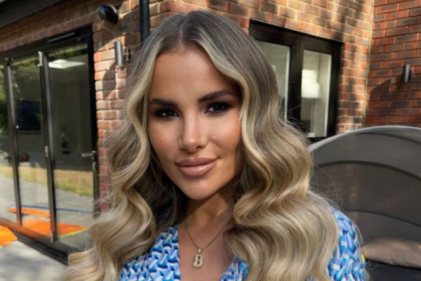 Fine motor skills are the smaller movements of the body, which mainly involve the hands, and can also refer to movements of the toes and mouth. Our touch system is our first form of communication and is essential for comfort. Using our hands and eyes in a coordinated way enables children to learn by exploring their world through play. Fine motor skills allow a child to become more independent in daily living skills such as dressing, eating with a knife and fork, and brushing teeth. Your child will also use his or her fine motor skills to learn to write and use scissors.
Fine motor skills are the smaller movements of the body, which mainly involve the hands, and can also refer to movements of the toes and mouth. Our touch system is our first form of communication and is essential for comfort. Using our hands and eyes in a coordinated way enables children to learn by exploring their world through play. Fine motor skills allow a child to become more independent in daily living skills such as dressing, eating with a knife and fork, and brushing teeth. Your child will also use his or her fine motor skills to learn to write and use scissors.
Fine motor skill development is reliant on many things including body awareness, a strong core, shoulder girdle stability, coordination between both sides of the body and being able to cross from one side of the body to the other. A well-developed sense of touch is needed for us to use our hands and fingers. Engaging in tactile activities can be a good starting point, to improve hand and finger awareness and to work on fine motor planning.
How can we encourage fine motor skill development? These are some of my favourite ways to promote sensory motor development in relation to fine motor skills:
Car wash
The car wash-set up with a tub, separate soap and toothbrushes - you can incorporate a garage if you want to. Kids will be using one hand to hold the car (supporting hand), and the toothbrush in the other, to wash the car (doing hand). Activities such as this support asymmetrical bilateral integration, which is using both hands together and each hand performing a different task.
Wash-up
Help Mum 'wash' with a sock over the hand - as in a glove - and the other hand with some laundry soap. Change hands over to complete the job.
Dolly baby bath, towel and dress up
Use textured clothes to feed the touch system. Use larger doll’s clothes with velcro to make it easier for younger children to dress the dolly, adding bubbles is great.

Stackable bubbles
These bubbles are great for kids' hand eye coordination and to encourage touch. Blowing bubbles is a good regulating activity, allowing them to set for a few seconds; then you can touch them and they don’t pop! You can catch them on your hands or use anything you like to catch them with.
Scented Play Doh-Roll
Pat and pull, using cut-out shapes, rollers and plastic scissors to snip into pieces. Hide smaller objects in it for kids to find; picking them out helps a child to use their thumb and finger together, known as a pincer grasp.
Touch books
These can be made, and the project itself can be fun for older children. Collect texture samples and link them together - sandpaper-rough/ smooth-felt, hard-plastic/soft-cotton wool, and any other material you can find.

Bubble wrap
So fun to pop! Why not try some bubble wrap painting, by placing bubble wrap on hands and feet, dipping in paint and transferring to paper? Rolling over bubble wrap on the floor is fun too, and great for body awareness.
Tactile bags
Place everyday objects into a bag and allow the child to reach in and guess what the item is without looking. This really supports tactile discrimination. If your child has touch sensitivities, allow them to see what they are feeling first.
Tactile bins
These are plastic trays filled with dry textures. Objects of interest are placed into the bins and kids can feel for the hidden items or play within the texture.

Shaving foam
This old classic is a rich sensory activity, easy to clean, and has a strong smell. You can squirt it onto foil, and use fingers to make patterns/shapes. There are lots of edible Play-Doh recipes, if your little one is likely to eat what they are feeling!
If your child has a lot of touch sensitivities, I love to begin with water play and then add glitter to the water. Never force your child to touch a texture they are not comfortable with, and keep a dry wipe handy for cleaning off.
If you think your child has tactile sensitivity, consult with an OT for the best treatment programme for you and your child.
You can see more information on Natalie’s OT Services on the PrivateOT Network at http://www.privateot.ie/ot/natalie-halloran/, or explore other Paediatric Occupational Therapists throughout the Country.
Find Natalie on Facebook at ‘Occupational Therapy Services’.








